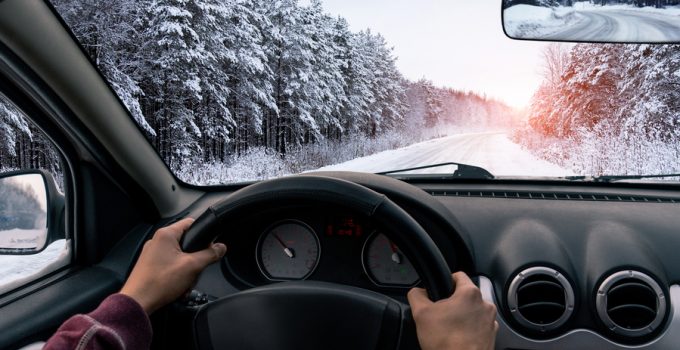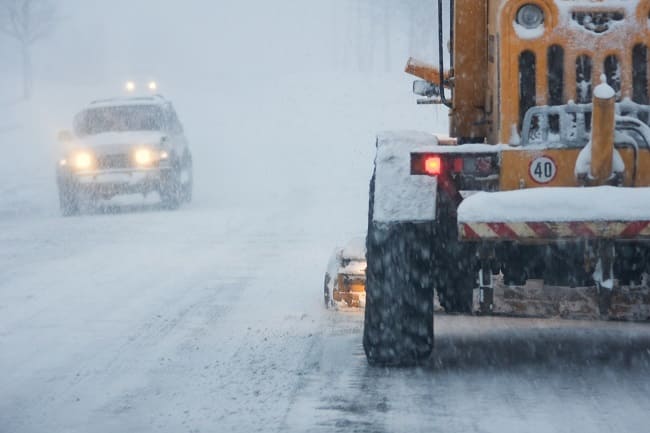
Driving in the winter season requires a lot of attention from the driver. A moment's distraction from the road can easily result in an accident. In this article, we suggest what to look out for when driving in winter and what to do to avoid problems.
Contents
The 5 biggest dangers on the road in winter
- Ice Cream. The grip of the wheels on the ice is minimal. A small mistake is enough and the car starts to slide. Also, always remember that braking distances increase significantly on slippery roads.
- Fresh snow. Snow can obscure many obstacles that can lead to traffic accidents.
- Slush. It often causes “mud planing”, i.e. the formation of a layer of dirt, snow and water between the tire tread and the road surface. Losing contact with the road surface makes it impossible to brake, accelerate and maneuver the vehicle.
- Poor visibility. It often happens that the windows of the car fog up and freeze due to snow, freezing cold and temperature changes. Under these conditions, it is impossible to see and evaluate the driving situation correctly. In addition, drivers cannot see traffic signs properly due to snow cover.
- Low temperatures. When it is very cold, the rubber in the tires hardens. This reduces grip on the asphalt. The contact between the wheels and the road becomes less reliable and at the same time significantly increases the braking distance.

12 tips from CarTipsandmore for safe driving in winter
- Be sure to replace summer tires with winter tires before winter comes. Winter tires are made from a special rubber compound that retains its elasticity even at low temperatures. In addition, the rubber compound of winter tires contains a lot of silicone, which improves grip on slippery roads. The tread pattern is also optimized to take into account the characteristics of a wet and slippery road. For example, some tire manufacturers make the treads with special micropumps that can absorb the moisture present on the ice surface.
- It is recommended to remove snow from the car and ice from the windows before driving. For this purpose, in addition to chemical agents, special ice scrapers with brushes are used. It is important that the windows are cleared of frost. Also remember to remove snow and dirt from wheel arches and fenders immediately. Frozen snow and dirt can impede the normal rotation of the wheels and affect the vehicle's ability to corner. Also, make sure you never drive with snow on the roof of the car. Otherwise it can come loose while driving and impair the driver's view of the following car. In addition, the vehicle's exterior lights, including the indicators, must be cleaned of snow and ice. This helps other road users to see your car on the road.

- Do not wear winter clothing when driving. It significantly impedes your movements. In addition, large jackets prevent reliable use of the seat belt, which can lead to injuries in a traffic accident. Activate the car air conditioner to make the inside temperature comfortable. Instead of thick clothing, you can wear a light jacket or vest.
- Always keep a safe distance from the vehicle in front of you. The distance can be a few meters when driving slowly in traffic jams, while it must be increased accordingly on the motorway. As a rule of thumb, the distance to the car in front should be half the speed you are traveling at. For example, if your car is going 40 km/h, you should be 20 meters away from the car in front.
- Pay attention to the traffic signs on both sides of the road. This helps with orientation if it is not possible to see what a street sign indicates due to snow cover.

- Watch out for other drivers: they can make mistakes. If a vehicle behind you does not keep the safe distance, let it overtake you, as you can brake in an emergency, but the driver behind you cannot.
- Do not overtake special vehicles. For example, snow clearing vehicles can significantly impair visibility due to snow turbulence. It is particularly dangerous to overtake when the snowplow is much wider than the vehicle and this is difficult to see.

- If you cannot start because the wheels are spinning, treat the tires with a special spray to improve grip on ice. This guarantees a safe start even with a thick layer of ice.
- Reduce speed before reaching traffic lights and intersections. These points are very dangerous for at least two reasons. For one thing, the constant braking makes the road more slippery than other sections of road. On the other hand, the probability of a collision with another road user who could make a mistake increases.
- Keep the wheels straight when accelerating. Otherwise there is a risk that the wheels will quickly lose grip.
- When planning a vacation in winter, make sure that luggage is properly packed and secured: in the event of a road accident, even the smallest objects can be very dangerous due to the force of impact.
- Improve your maneuverability.
When driving on a slippery road, you can do the following:
- In the event that the vehicle does not react correctly when steering, the steering wheel must be brought back to the starting position and then turned again but slowly. Under no circumstances should you turn the steering wheel as far as it will go: This can lead to a complete loss of control.
- How to do it correctly: If you want to prevent the front wheels from skidding, the load must be maximized before you start steering. To do this, abruptly release the accelerator pedal and turn the steering wheel in a large arc. After cornering starts, step on the accelerator lightly.
- When a rear-wheel drive car skids, the steering wheel must be pointed in the direction of travel and the accelerator pedal must be fully released. With four-wheel drive, the steering wheel must also be aligned in the direction of travel or slipping, but the accelerator pedal must not be fully released, only partially. In the case of front-wheel drive, turn the wheels in the desired direction and press the accelerator pedal.
- Remember that it is also possible to regain control of the vehicle using the clutch pedal. Lightly pressing the pedal can stop a vehicle from rotating and skidding. If you are driving in very snowy areas where you don't have enough traction to move off, you can increase engine speed by disengaging the clutch.
- If you want to stop safely, the best method is intermittent braking. This consists of a series of short, firm, and repeated steps on the brake pedal. This way you can gradually decrease the car's speed without the wheels slipping.
- With front-wheel drive, you can bring the skidding vehicle back under control by pressing the accelerator and brake pedals at the same time. Finally, it is possible to perform similar maneuvers with the parking brake.
Conclusion
Driving on roads in winter involves many dangers. However, that doesn't mean you have to leave the car in the garage and wait for better days. If you are considerate of other road users, keep your vehicle's systems and units in good working order, constantly improve your driving skills and follow our recommendations, you can drive with peace of mind and safely in winter.
